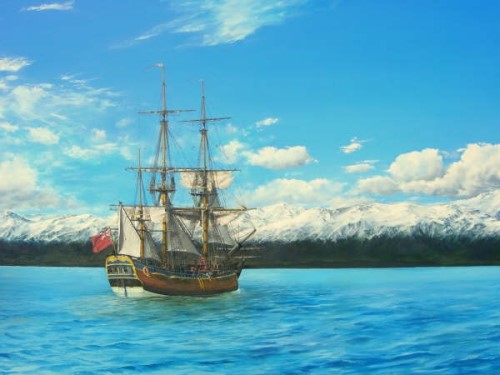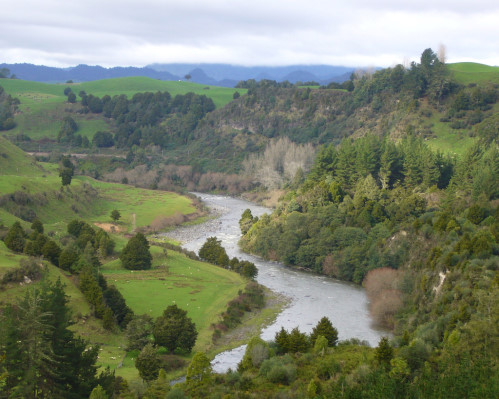Categories: Geography of New Zealand New Zealand is a tiny island country 11, 663 kilometers east of South Africa situated in the Pacific Ocean. Our nearest neighbours are Australia and the Pacific Islands. The area of sea between New Zealand and Australia is called the Tasman Sea, but is generally refered to as “the ditch” and... Read more |
The post Geography of New Zealand appeared first on South Africans Going To New Zealand.
]]>
Geography of New Zealand

New Zealand is a tiny island country 11, 663 kilometers east of South Africa situated in the Pacific Ocean. Our nearest neighbours are Australia and the Pacific Islands. The area of sea between New Zealand and Australia is called the Tasman Sea, but is generally refered to as “the ditch” and is around 2000km wide

The country consists of two main islands and many smaller ones. The two islands don’t have official names and are just refered to as the North Island and the South Island. (The smaller island you can see on the map above situated just below the South Island is called Stewart Island.).
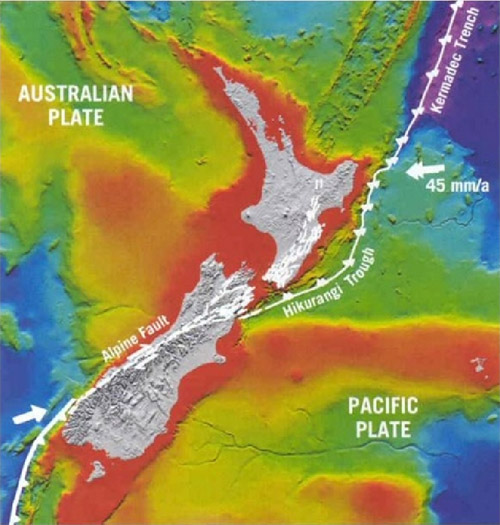 .
.
The country is situated on the boundary between two fault lines. These fault lines are moving towards each other at a rate of 45mm per annum. As a result there are around 14 000 earthquakes in New Zealand every year. Most so small that you can’t feel them. It also means that there are volcanically active areas throughout the North Island.
Being a country made up of islands there is also 18 000 kilometers of coastline that you can enjoy. In fact no matter where you live in New Zealand, you are never more than 130 kilometers away from the sea
Here are some typical scenes you will see around the North Island
and the South Island
The post Geography of New Zealand appeared first on South Africans Going To New Zealand.
]]>Categories: New Zealand Weather The New Zealand weather varies quite a bit depending on where you stay. The further south you go, the colder you can expect to get in winter. Auckland seldom gets frost in winter, yet places further south will be covered in snow. The summer months are wonderfully warm and outdoor activities are... Read more |
The post New Zealand Weather appeared first on South Africans Going To New Zealand.
]]>
New Zealand Weather

The New Zealand weather varies quite a bit depending on where you stay. The further south you go, the colder you can expect to get in winter. Auckland seldom gets frost in winter, yet places further south will be covered in snow. The summer months are wonderfully warm and outdoor activities are abundant then. With Auckland being on the same latitude as Cape Town, the temperatures are comparable.
The rainfall in New Zealand is also considerably higher than in South Africa with the result is things are a lot greener here. Even your grass tends to stay green during the winter as that is the rainy season here. It does however also rain during the summer months occasionally.
The Maori name for New Zealand is Aotearoa (pronounced : Ah-tay-’n-row-’n) which means “Land Of the Long White Cloud”. If you look at the satellite image above you can see why. Seriously large cloud masses form in this part of the world. Some linger and bring us rain for a week or more on end, others blow over within a day without even as much as a drop falling. Another name New Zealand is known by is “Godzone” which means “God’s Own” because of the stunning beauty of the land.
This is how the weather broadcast looks like on TVNZ
/iframe]
Further Research Links
The post New Zealand Weather appeared first on South Africans Going To New Zealand.
]]>Categories: History of New Zealand 4 It is not certain where the first people landed in New Zealand, but it is thought to be between 700AD and 1300AD when Polynesian colonists first set foot on this untouched land. Until then the land had been dominated by birds believe it or not. New Zealand had no predators... Read more |
The post History of New Zealand appeared first on South Africans Going To New Zealand.
]]>
History of New Zealand
It is not certain where the first people landed in New Zealand, but it is thought to be between 700AD and 1300AD when Polynesian colonists first set foot on this untouched land. Until then the land had been dominated by birds believe it or not. New Zealand had no predators and was a very peaceful place. That changed dramatically when man arrived though. The early Maori were skilled seafarers and excellent fishermen. They formed many many tribes across New Zealand. These tribes not only fought each other, but also cannibalised each other with the winning tribe dismembering, cooking and eating their captives.
In 1642 a Dutch explorer Abel Tasman was the first European to sight New Zealand. Although he did land, they soon left after several of the crew were killed by the Maori. It wasn’t until James Cook arrived in 1769 when the Europeans landed for good. Various territorial wars and battles raged throughout New Zealand as late as the 1870′s between Maori tribes as well as between Maori and Pakeha (Maori word for Europeans). Gradually however the Maori adopted the European way of doing things and the Pakeha adopted many Maori customs. One major thing that Kiwis from all sides of the spectrum do have in common is their love for the natural beauty of the country and the need to preserve it.
Further Research Links
The post History of New Zealand appeared first on South Africans Going To New Zealand.
]]>Categories: Treaty of Waitangi The founding document of New Zealand is called the Treaty of Waitangi. This is a document signed between the British government and the majority of the Maori tribes on the 6th of February 1840. The document contains three main agreements : Maori ceded the sovereignty of New Zealand to Britain; Maori gave... Read more |
The post The Treaty of Waitangi appeared first on South Africans Going To New Zealand.
]]>
Treaty of Waitangi
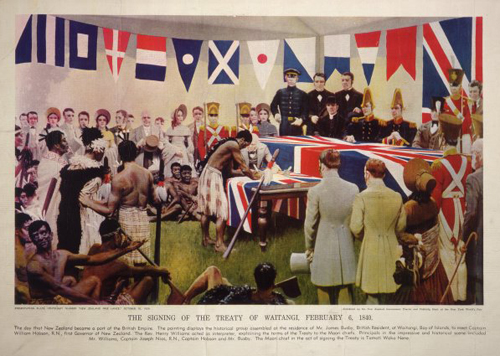
The founding document of New Zealand is called the Treaty of Waitangi. This is a document signed between the British government and the majority of the Maori tribes on the 6th of February 1840. The document contains three main agreements :
- Maori ceded the sovereignty of New Zealand to Britain;
- Maori gave the Crown an exclusive right to buy lands they wished to sell, and, in return, they were guaranteed full rights of ownership of their lands, forests, fisheries and other possessions; and that
- Maori would have the rights and privileges of British subjects
Due to the fact that the Treaty was not drafted by a qualified lawyer and that the Maori version was translated using words that don’t quite mean the same to Maori and English. There are discrepancies between the English version and the translated Maori versions of the Treaty. This has allowed for a difference in the interpretation between the two languages. The main discrepancies are between what the Maori thought the meaning of handing over sovereignty meant as well as what their possessions meant.
To make matters worse the Treaty was never ratified or enacted into law so from the British (Crown) side, so for years there was and still is debate over whether the Treaty is even binding on the Crown.
For the most part though the Treaty has been recognised as binding since strong Maori Protests in the 70′s and 80′s. In 1975 a Waitangi Tribunal was set up to investigate discrepancies in the translations as well as breaches to the Treaty.
As a result, since the 1990′s the government has begun to negotiate settlements of historical (pre-1992) claims. Some of these settlements have included public apologies by the Crown, cash settlements of nearly $1 Billion or official recognition of Maori land which was taken from them.
Today there are still many issues being contested in front of the Tribunal as well as in the Courts of law. Issues like right of the Maori to the proceeds and rights to mine the seabed as well as the use of the FM radio spectrum.
The post The Treaty of Waitangi appeared first on South Africans Going To New Zealand.
]]>Categories: Government Structure The New Zealand government structure is a constitutional monarchy with a parliamentary democracy. What that basically means is that there is a democratically elected government in place that runs the country, yet the Queen of England is the head of state. The Queen does however not “run the show” here and the position... Read more |
The post Government Structure appeared first on South Africans Going To New Zealand.
]]>
Government Structure
New Zealand is thus in a very unique position where it actually has two national anthems : “God defend New Zealand” and “God save the Queen”. “God save the Queen” is however very very seldom sung and “God defend New Zealand” is the anthem you will hear sung at events. “God defend New Zealand” consists of 5 verses. Very few New Zealanders will know all five though as traditionally only the first verse is sung – first in Maori, then repeated in English.
One interesting part of this association with England is that every year several Kiwis are knighted for service to the Queen and country.
The capital of New Zealand is situated in Wellington. The house of parliament is called the Beehive.
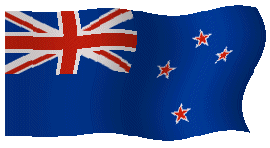
The national flag consists of a blue background with the Union Jack in the top left hand quarter and four red stars representing the Southern Cross star constellation in the right hand half. Because of the flag’s similarity to that of Australia there is a drive to change the flag to a more uniquely Kiwi one. Other national symbols commonly used are the silver fern and the kiwi.
This is a typical exchange you will find in Parliament
The post Government Structure appeared first on South Africans Going To New Zealand.
]]>Categories: New Zealand Population 2 The New Zealand population is small but growing. With a population of just over 4 million and a land area of 268 680 km2 we have plenty of open spaces to explore. To give you a comparison, you can have a look at the table below Country Land Area (km2) Population New... Read more |
The post New Zealand Population appeared first on South Africans Going To New Zealand.
]]>
New Zealand Population
The New Zealand population is small but growing. With a population of just over 4 million and a land area of 268 680 km2 we have plenty of open spaces to explore. To give you a comparison, you can have a look at the table below
|
Country
|
Land Area (km2)
|
Population
|
|
New Zealand
|
268 680
|
4 315 800
|
|
South Africa
|
1 211 037
|
49 320 000
|
|
United Kingdom
|
244 820
|
61 113 205
|
Population Distribution
As with most countries nowadays, there is a strong trend towards the urbanisation of the population, with more and more people gradually moving into the cities. At the heart of this urbanisation is Auckland, with over 30% of the population living there. As a result Auckland has recently been declared a Super City. The second largest city is Wellington with around 400 oo0 inhabitants, with Christchurch hot in it’s heals with around 375 000. From there the spread, and scenery becomes quite rural rather quickly. Most towns in New Zealand have a population of 50 000 or less.
Have said that though, you can ride along the most rural roads in New Zealand and find houses dotted all along the road unlike in South Africa where you ride for kilometers without seeing any signs of life.
Some Interesting Population Stats
It is often thought that New Zealand’s population is in decline because the fertility rate has dramatically declined in recent decades because of the urbanisation trend. Reality though is that the natural New Zealand population growth is roughly 30 000 per year as the effects of the declining fertility rate has not affected the stats yet. This will however gradually decline to meet the falling fertility rate as time goes on.
As with South Africa, New Zealand is also said to be experiencing a brain drain because the Kiwis like to head over to Europe for what they call an OE (Overseas Experience). Many then never return. The same goes for many Kiwis leaving to go work in Oz because the salaries are generally higher there. Statistics New Zealand have however found that the opposite is true. New Zealand is actually experiencing a brain gain due to three factors :
a) the Kiwis that are leaving permanently are of all education levels and not just the highly educated
b) most Kiwis that leave for their OE actually do return after a few years
c) the migrants that are arriving are highly educated so are adding to the knowledge pool.
A New Zealander is born roughly every 8 minutes and one passes away every 19 minutes. A new migrant arrives every 126 minutes.
The post New Zealand Population appeared first on South Africans Going To New Zealand.
]]>Categories: New Zealand Culture Many other nationalities have made New Zealand their home and South Africans are no exception. This has resulted in a New Zealand culture that is constantly changing and expanding itself. Currently the ethnic breakdown of the country is roughly European / Other 78% Maori 14.6% Asian 9.2% Pacific Peoples 6.9% Because... Read more |
The post New Zealand Culture appeared first on South Africans Going To New Zealand.
]]>
New Zealand Culture

Currently the ethnic breakdown of the country is roughly
| European / Other | 78% |
| Maori | 14.6% |
| Asian | 9.2% |
| Pacific Peoples | 6.9% |
Because of this cultural diversity in especially the major cities, you are able to buy and enjoy many different products, customs and festival throughout the year. To give you an example – you can walk into almost any given shopping centre and buy items like sushi, boerewors and imported English biscuits straight off the shelf.
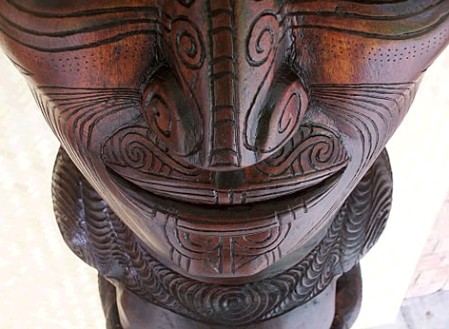
The Maori culture is also widely promoted and participation in their cultural practices is encouraged among Kiwis.
New Zealand has 3 official languages, nl. English, Maori and sign language. With 98% of the population able to speak English it is by and large an English country. You will however hear all sorts of languages being spoken when walking around the mall, including plenty of Afrikaans.
Although there is no official religion, 56% of Kiwis consider themselves Christian, 35% as having no religion and the rest as having a different religion. Christian churches are as abundant in New Zealand as we were used to in South Africa.
The post New Zealand Culture appeared first on South Africans Going To New Zealand.
]]>Categories: New Zealand Economy The New Zealand economy is not very large when compared to other countries in the world. It is however currently one of the most stable economies. This is largely due to the whole Asia Pacific region being the strongest growth area in the world today. We will chat more about that shortly.... Read more |
The post New Zealand Economy appeared first on South Africans Going To New Zealand.
]]>
New Zealand Economy
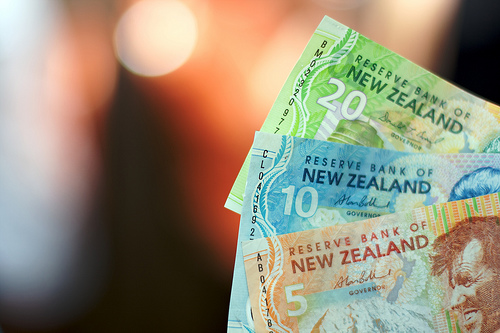
The New Zealand economy is not very large when compared to other countries in the world. It is however currently one of the most stable economies. This is largely due to the whole Asia Pacific region being the strongest growth area in the world today. We will chat more about that shortly. Let’s first look at the basics.
The currency is the New Zealand Dollar and the country has a nominal GDP of US$128.492 billion compared to South Africa’s US$300.4 billion. That gives you a per capita value of US$33 049 for New Zealand as opposed to US$5693 for South Africa. New Zealand is by all standards a first world, westernised country.
Due to our location compared to the rest of the world, exporting and importing is big business in New Zealand. The biggest export industries are agriculture, horticulture, fishing and forestry. Our biggest company is the dairy giant Fonterra which is a co-operative business consisting of around 10 000 Kiwi farmers. These farmers then produce roughly 30% of the world’s dairy exports.
The New Zealand economy is very dependent on the value of it’s Dollar because of it’s reliance on exports and imports. The problem is however that there is never an optimal value for the Dollar. If it goes too high in value when compared to the US Dollar, then the exporters have a big problem as their profits fall. On the other hand, when the Dollar is high then the goods imported into New Zealand cost less so the retailers and consumers smile.
As far as the country’s growth is concerned it has remained pretty stable during the global economic crisis. This is because the Oz and Chinese economies have been very strong during this time and they are two of our largest trading partners. Also due to China’s staggering growth, the entire Asia Pacific region is being dragged along upward with it.
The post New Zealand Economy appeared first on South Africans Going To New Zealand.
]]>Categories: New Zealand Education System The New Zealand education system is ranked 7th best in the world and is compulsory between the ages of 6 and 16. Most children however start school at the age of 5 already and continue for the full 13 year curriculum. School Zones In order to ensure that some schools don’t... Read more |
The post The New Zealand Education System appeared first on South Africans Going To New Zealand.
]]>
New Zealand Education System
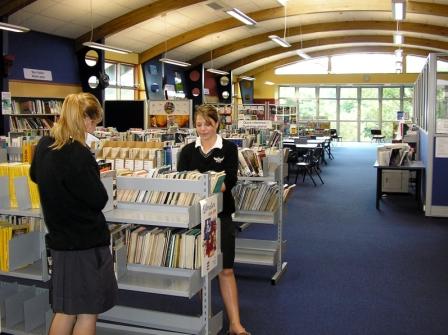
The New Zealand education system is ranked 7th best in the world and is compulsory between the ages of 6 and 16. Most children however start school at the age of 5 already and continue for the full 13 year curriculum.
School Zones
In order to ensure that some schools don’t become over-crowded while others remain empty, each school is placed in a “zone”. You would then need to live in that school’s zone in order to send your kids to that school.
When looking for a house, you need to be very careful because sometimes the zones can be divided up quite bizarrely, for example a street may have all the even numbered houses in one zone and uneven numbered houses in another. It is always best to check with the actual school that you want to send your child to, to ensure that the house you want to buy / rent is in zone.
School Decile Ratings
The schools are rated via a decile system, the higher the decile of the school, the higher the socioeconomic standing of the students in the school. In other words a school in a more affluent area will have a higher decile rating that a school in a less affluent area.
It is important to note that the decile rating does not imply worse education standards or worse teachers at that school.
In reality however most Kiwis will tell you that a higher decile school will provide a better education. Parents will actually sell their house and move to a new area to ensure their children can go to a high decile school. There are also state funded schools as well as private schools to choose from.
There are many universities, polytechnics (technikon) and colleges throughout New Zealand, each offers it’s own courses as is the case in South Africa. The government has a Student Loan scheme whereby they offer you an interest free loan for your course fees, course related expenses as well as a weekly living allowance. This amount is then paid back as a percentage of your salary when you start working.
The post The New Zealand Education System appeared first on South Africans Going To New Zealand.
]]>Categories: Crime in New Zealand 6 Crime in New Zealand is well controlled and is in fact reducing per capita year on year, but as with all other countries there is still a fair amount. This means that there are still certain precautions you need to take when in New Zealand to reduce your chance of... Read more |
The post Crime in New Zealand appeared first on South Africans Going To New Zealand.
]]>
Crime in New Zealand
 6
6
Crime in New Zealand is well controlled and is in fact reducing per capita year on year, but as with all other countries there is still a fair amount. This means that there are still certain precautions you need to take when in New Zealand to reduce your chance of becoming a victim of crime.
Types of Crime in New Zealand
The types of crimes and the frequency of crimes in New Zealand is however significantly lower than that of South Africa. To give you an idea, in 2012 there were 43 murders reported of which 39 were solved. Overall crime is decreasing by 5% year on year.
Highjackings are unheard of here. Murder, assault, theft and fraud related crimes are steadily decreasing due to a very efficient police force. There is however a disturbing trend of increasing sexual assault cases, as well as driving while under the influence cases.
Another worrying problem is child abuse cases, especially among the Maori / Pacific Island population. This prompted a no-smacking law to be introduced in 2009.
Anti Smacking Law in New Zealand
It was however not well received so a referendum was held asking if you agreed with the law change or not. Over 80% of the population did not agree with the law change. A decision was then made to keep the law in place in order to give the police the teeth required when child abuse does occur, but that the law would not be strictly imposed under normal circumstances. In other words you are allowed to give your child a hiding as long as it doesn’t cause bodily harm. A recent poll (April 2012) shows that 56% of parents said they have smacked their child or children since the law change and 66% of parents said they would smack their child in future. 81% of parents said they would not report another parent who they saw smacking a child on their backside or hand.
Recent police statistics (2011) showed that almost 500 Kiwi families have had a police investigation for allegations of smacking or minor acts of physical discipline since the law was passed – yet only 7% of them have been serious enough to warrant charges being laid.
Preventing Crime
As South African this comes naturally already, but once you have been here a while you tend to become a little lax, so here are a few pointers anyway.
- Lock your car door and close the windows when going shopping
- Don’t leave your cellphone, laptop or other electronics in plain sight in the car, put it in the cubbyhole or boot.
- When shopping don’t put your wallet on the baby seat in the trolley and then walk off – yes people do that here.
- Close the windows and lock the doors to your house when going out.
- At night, lock the doors to the house and close the windows to the rooms where you are not sleeping in. Have anti-theft latches installed to the bedroom windows so that they can’t be opened fully.
- Swipe your own card when paying at restaurants. Don’t let the waiter take the card away.
- Make a list of all the serial numbers of your electronic goods so that they can be loaded into the Police database when stolen. That way they can be traced if the burglar tries to sell it to a second hand shop.
What to do if you are a victim of crime.
Report it at your nearest Police station, or call 111. If it is a break in or something like that where there is a crime scene, then don’t touch anything until the Police have given you the all clear. Crimes are properly investigated here and the perpetrators do get caught, so you don’t want to destroy any evidence that could help the Police.
Jury Duty
In New Zealand you can be called up to perform jury duties. This includes Permanent Residents, but not those on Work Permits.
If you are called up for Jury Duty, you are required to perform those duties by law, unless you have a very good reason for the judge to excuse you. Most cases are quick, but more serious cases can spread over a few months.
You are compensated for your time in court, but it will obviously not be what you normally get paid at work. Many employers though will still pay you your salary when on Jury Duty.
The post Crime in New Zealand appeared first on South Africans Going To New Zealand.
]]>
